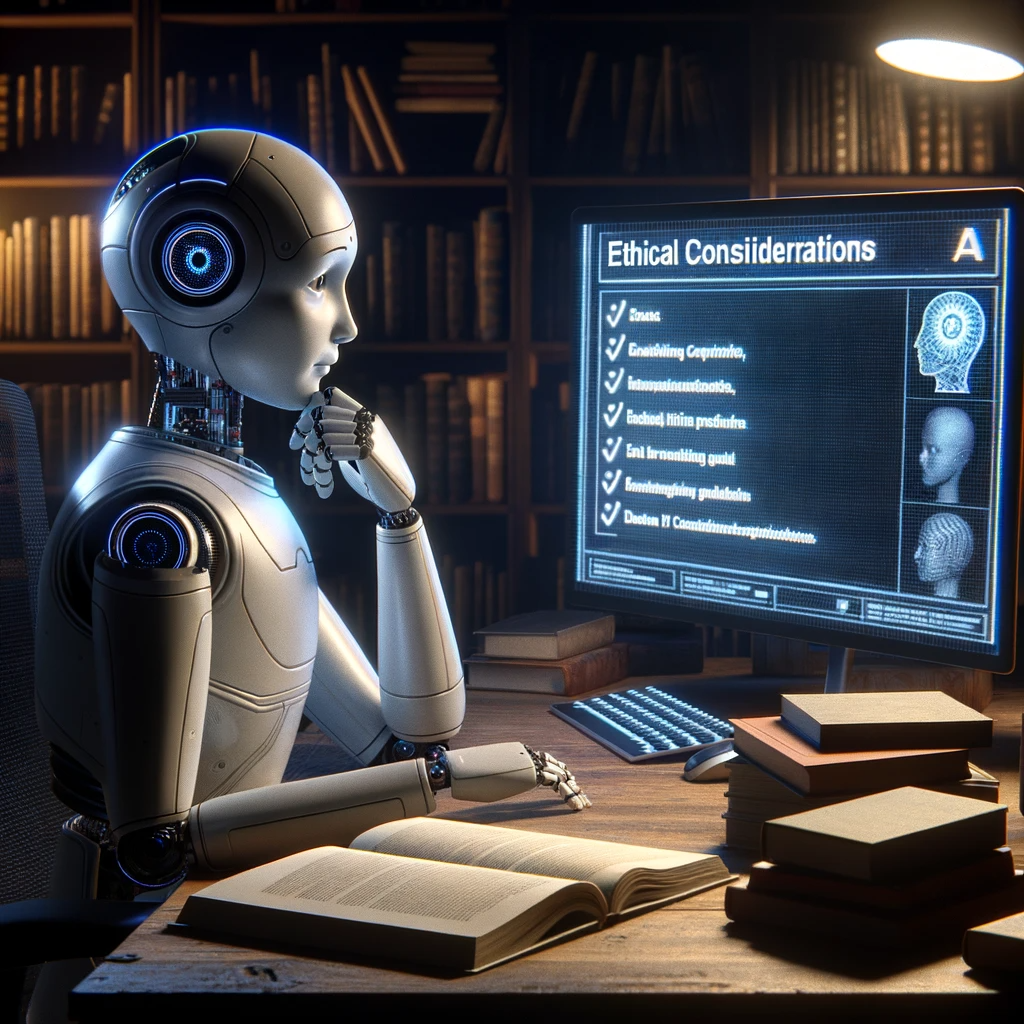Challenges in Understanding and Using AI in Education
My experience with AI in education has changed my life. However, it wasn’t without problems. Some of these also put my technical thinking skills and critical thinking skills to the test. Still, they were also instructive in navigating the complications of incorporating AI into teaching and learning. On this page, I’ve explored the challenges I faced to overcome and the insights I learnt.

1. Data Privacy and Security Concerns
The biggest problem was understanding and dealing with data privacy and security issues. For example, many AI tools involve users uploading data to cloud-based systems, asking questions about where and how that data is stored and who can access it.
For instance, on Explainpaper and Classpoint AI, I would often refrain from uploading personal or sensitive information. Some of the tools’ privacy policies were unclear, making it very hard to give a full risk analysis. The challenge highlighted the caution and information that had to be taken by educators and students when using AI. It additionally emphasised the significance of endorsing the principle of transparency and accountability in AI systems.
Lesson Learned: After a lightning round with the tools, I began to always look at the privacy policies of all these AI tools. I also used tools that had robust security measures and transparent data policies.
2. Bias and Fairness in AI Systems
Another challenge was identifying and solving the bias in AI algorithms. AI systems are good at analysing huge amounts of data in a short time, but the biases that they pick up tend to be the ones in the data they train on. In one group project, we employed an AI tool to evaluate the performance of student data. The tool seemed to take paths that accounted for certain student learning styles but not for others, raising questions of inclusivity and fairness in AI applications.

Lesson Learned: We should critically assess AI tools and interpret their outputs with a grain of salt. This means using a diverse and representative data set to ensure the fairness of such AI systems.
3. Technical Limitations and Learning Curve
AI tools are meant to simplify work, but a few come with a steep learning curve, especially for people unused to more advanced technology. To name a few examples, Adobe Firefly and Leonardo.AI are amazing when it comes to creating professional-grade visuals, but these tools took a hell of a lot of time to understand. Likewise, building AI-driven presentations with platforms like Tome AI posed an issue of creating presentations with the right tool that can properly intertwine with my creative hand.
There were so many complex tools that it sometimes proved difficult to use those complex tools fully within the constraints of assignments and deadlines.
Lesson Learned: A key to learning AI tools is practice and practice. Building confidence may start with less advanced platforms like Canva Magic or QuillBot and go from there, but with time, we learned a lot.
4. Ethical Considerations
The ethical implications of using AI in education were also a big challenge. For example, “How far should AI replace human teachers?” and “How do we make sure that AI gets used responsibly?” I often raised the issue during discussions and projects. For example, Automation can efficiently reduce the time required to grade or answer student queries, but it also implies risks of reducing the human aspect of education. Is the teacher-student relationship at risk due to overreliance on AI?

Lesson Learned: Technology shouldn’t replace humans and be the instructor in the classroom. It is important that the personal touch of teaching and learning is preserved whilst taking a balanced approach.
5. Adapting to Rapidly Changing Technologies
AI is growing rapidly, and it’s hard to know where to turn to keep up with all the new stuff. Every once in a while, a newer and more advanced version of a tool would come along, and it would almost always require a new learning curve. On the one hand, it was exciting, but on the other hand, I struggled to keep up and effectively use AI tools.
Lesson Learned: In a technology-driven world, the most important things are continuous learning and being adaptable. Leave yourself up to date by watching webinars, taking courses, and tech updates are all pivotal in using AI effectively.
Overcoming the Challenges
Despite the challenges, the experience was really quite rewarding. These obstacles helped me see technology with a critical eye, and recognise the importance of a willingness to accept new things and deal with its flaws.
For example:
- Hanging out with peers to deal with ethical issues spurred great conversations about education in the future.
- I experimented with different tools and made many mistakes, which made me more confident and resourceful.
Closing Thoughts on this
When I started exploring AI in education, I didn’t encounter roadblocks. Instead, I discovered stepping stones to a much deeper understanding of this transformative field. These stepping stones taught me to be more thoughtful, ethical, and resilient when dealing with technology. I keep pushing this journey, and now challenge myself to tackle these problems on the front end, and to call out for AI for the right, responsible and inclusive uses in education.
In the next section, I’ve discussed how these experiences could be adapted for future classrooms and create a use to bring good through AI education. Keep Reading :)
